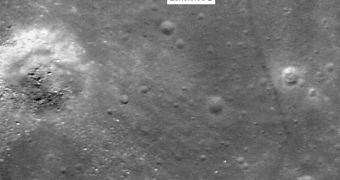A Canadian researcher has recently discovered the tracks left behind by a famous Russian lunar rover. The investigator used only maps from one of his own atlases on the Moon, and recent images from the NASA Lunar Reconnaissance Orbiter (LRO) spacecraft, to make the finding. The inspiration for the work came from the “The International Atlas of Lunar Exploration,” which the scientist himself published no more than three years ago, ScienceDaily reports.
Phil Stooke is a professor at the University of Western Ontario's Departments of Physics & Astronomy. He says that the mystery surrounding the Lunokhod 2 rover has been persisting for at least 37 years. That small machine, which the Soviet Union sent at the time to travel on the Moon, completed a 35-kilometer trek on the surface, making it the longest rover trip on another celestial body in the history of space exploration. For comparison, the MER Opportunity has only traveled a little over 10 miles in its six-year stay on Mars. The other rover, Spirit, traveled even less.
Finding the tracks left behind by the old rover was a real challenge, which could only be accomplished after the LRO management team posted the images and full datasets that their orbiter had collected. This happened two days ago. Using his own atlas, and the new, high-resolution photos collected by the NASA spacecraft, Stooke was able to determine the location of Lunokhod 2 with great accuracy. “The tracks were visible at once. Knowing the history of the mission, it's possible to trace the rover's activities in fine detail,” the expert says.
“We can see where it measured the magnetic field, driving back and forth over the same route to improve the data. And we can also see where it drove into a small crater, and accidentally covered its heat radiator with soil as it struggled to get out again. That ultimately caused it to overheat and stop working. And the rover itself shows up as a dark spot right where it stopped,” he adds. The new investigation also implies that the old maps of the lunar region which were produced by Russia will need to be revisited. The LRO, flying in a 31-mile-high orbit around the Moon, is uniquely qualified to capture impressive details of the Earth's natural satellite.

 14 DAY TRIAL //
14 DAY TRIAL //